#pricinganalysis
Explore tagged Tumblr posts
Text
Why eCommerce Brands Need Digital Commerce Intelligence
“Let’s BlinkIt”, or “Look it up on Amazon” These phrases have become common in our everyday lives. This reflects how online shopping; and digital commerce intelligence are getting ingrained in our habits and their convenience has become an integral part of any shopper’s routine.
To match the changing and ever-evolving customer behavior and needs shopping platforms are also expanding their inventory across categories covering every aspect of shopper’s needs from food and beverages, groceries, fashion & accessories, and home decor to last-minute needs with quick commerce. enhancing UI/UX to connect with the audience, penetrating beyond tier-1, and tier-2 cities.
The eCommerce is expanding, enhancing customer experience, and even coming up with new exclusive niche categories. These are exciting times for brands and shoppers. However, as the eCommerce game is moving into the next level brands also need digital commerce intelligence to stay ahead of the competition.
Intelligence across platforms and geographies helps effortlessly elevate business by strategically refining every touchpoint with data-driven decisions to optimize your customer journey across digital commerce marketplaces and product categories.
Click here to read more about Digital Commerce Intelligence
#quickcommerce#ecommerce#pricinganalysis#digitalshelfanalytics#ecommercecompetitiveanalysis#digitalcommerceintelligence#ecommerceintelligence#ecommercesolution#digitalcommerceanalytics
0 notes
Text
Review of the Best 17 Secure FTP Solution: A Comprehensive Pricing Analysis
1 note
·
View note
Link
The Indian subcompact SUV segment is a fiercely competitive battleground, with carmakers constantly innovating to attract buyers. Fuel efficiency is a key factor influencing purchasing decisions in this market, and the recently launched Toyota Urban Cruiser Taisor is making waves with its impressive claimed mileage figures. But how does the Taisor stack up against its rivals in terms of fuel economy? Let's delve deeper and analyze the contenders. Shared DNA, Shared Efficiency The Toyota Taisor and the Maruti Fronx are more than just close competitors; they share a deeper kinship. These vehicles are essentially twins under the skin, built on the same platform and utilizing identical powertrains. This shared lineage translates to a shared advantage – class-leading fuel efficiency figures. Toyota Taisor Takes on the Competition Both the Taisor and Fronx offer a choice of two petrol engines: a 1.2-liter naturally aspirated unit and a 1.0-liter turbocharged motor. Additionally, they boast a CNG (Compressed Natural Gas) option for the 1.2-liter engine, catering to a growing segment of eco-conscious drivers seeking lower running costs. Kia Sonet (and Likely Venue) and Maruti Brezza: Balancing Power and Efficiency While the Kia Sonet and its cousin, the Hyundai Venue, might not top the charts in terms of claimed fuel efficiency, they offer a compelling balance between power and fuel economy. Their 1.0-liter turbocharged engine delivers a healthy 120 PS, making them some of the most powerful options in the segment. We expect the Venue's claimed mileage figures to be similar to the Sonet, with slight variations due to potential differences in transmission options. The Maruti Brezza, on the other hand, stands out for being the only other SUV here, besides the Tailor and Fronx, to offer a CNG variant. This option delivers a claimed mileage of 25.51 km/kg, making it a fuel-efficient choice for budget-conscious buyers. The Brezza's 1.5-liter naturally aspirated petrol engine, though the largest unit in this comparison, manages a respectable claimed mileage of up to 19.89 km. Crucial Considerations Beyond Claimed Mileage It's vital to remember that claimed fuel efficiency figures provided by manufacturers are determined under controlled testing conditions. Real-world driving experiences can significantly impact actual fuel economy. Factors such as driving style, traffic conditions, road terrain, and even weather can influence mileage. Here are some additional considerations to keep in mind when evaluating fuel efficiency: Driving Habits: Aggressive driving habits, characterized by frequent acceleration and braking, can significantly reduce fuel efficiency. Maintaining a steady pace and practicing smooth acceleration techniques can improve mileage. Traffic Conditions: Stop-and-go traffic is a major enemy of fuel economy. City driving will likely yield lower mileage compared to highway cruising. Terrain: Driving on hilly or mountainous terrain requires more engine effort, leading to decreased fuel efficiency. Weather: Extreme weather conditions, such as cold starts or hot weather with increased air conditioning usage, can impact fuel economy. Beyond Fuel Efficiency: Additional Factors to Consider Fuel efficiency is certainly a crucial factor when choosing a car, but it shouldn't be the sole deciding element. Here are some other important aspects to consider: Performance: If you prioritize power and acceleration, some options in this segment, like the Kia Sonet and Tata Nexon, might be more appealing. Features and Technology: The level of features and technology offered by each SUV can vary significantly. Consider your priorities in terms of infotainment systems, safety features, and creature comforts. Brand Reputation and Service Network: Evaluate the reputation of each carmaker for reliability and after-sales service. A strong service network ensures easy access to maintenance and repairs. Test Drive: A test drive is an essential step before making a final decision. It allows you to assess the vehicle's handling, comfort, and overall driving experience. FAQs Q: Which SUV in this segment offers the absolute best fuel efficiency? A: Based on claimed mileage figures, the Toyota Taisor and Maruti Fronx currently hold the top spot with their impressive 28.5 km/kg for the CNG variant and 22.8 km for the petrol automatic. Q: Is the Kia Sonet a fuel-efficient option? A: The Kia Sonet's claimed mileage figures fall short of the segment leaders. However, it offers a balance between power and efficiency, with a 1.0-liter turbocharged engine that delivers good performance. Q: Should I prioritize claimed mileage figures or real-world fuel efficiency? A: Claimed mileage figures provide a benchmark, but real-world fuel economy can vary. Consider both factors, alongside other aspects like performance, features, and budget, when making your choice. Q: What are some tips for maximizing fuel efficiency? A: Maintaining a steady pace, avoiding aggressive driving, and properly maintaining your vehicle can all contribute to improved fuel economy.
#crossoverefficiency.#dieselengine#enginevariants#fuelefficiencycomparison#kiasonet#MarutiBrezza#MarutiFronx#pricinganalysis#sub4mSUV#tatanexon#ToyotaTaisor#ToyotaTaisorTakesontheCompetition#transmissionoptions
0 notes
Text
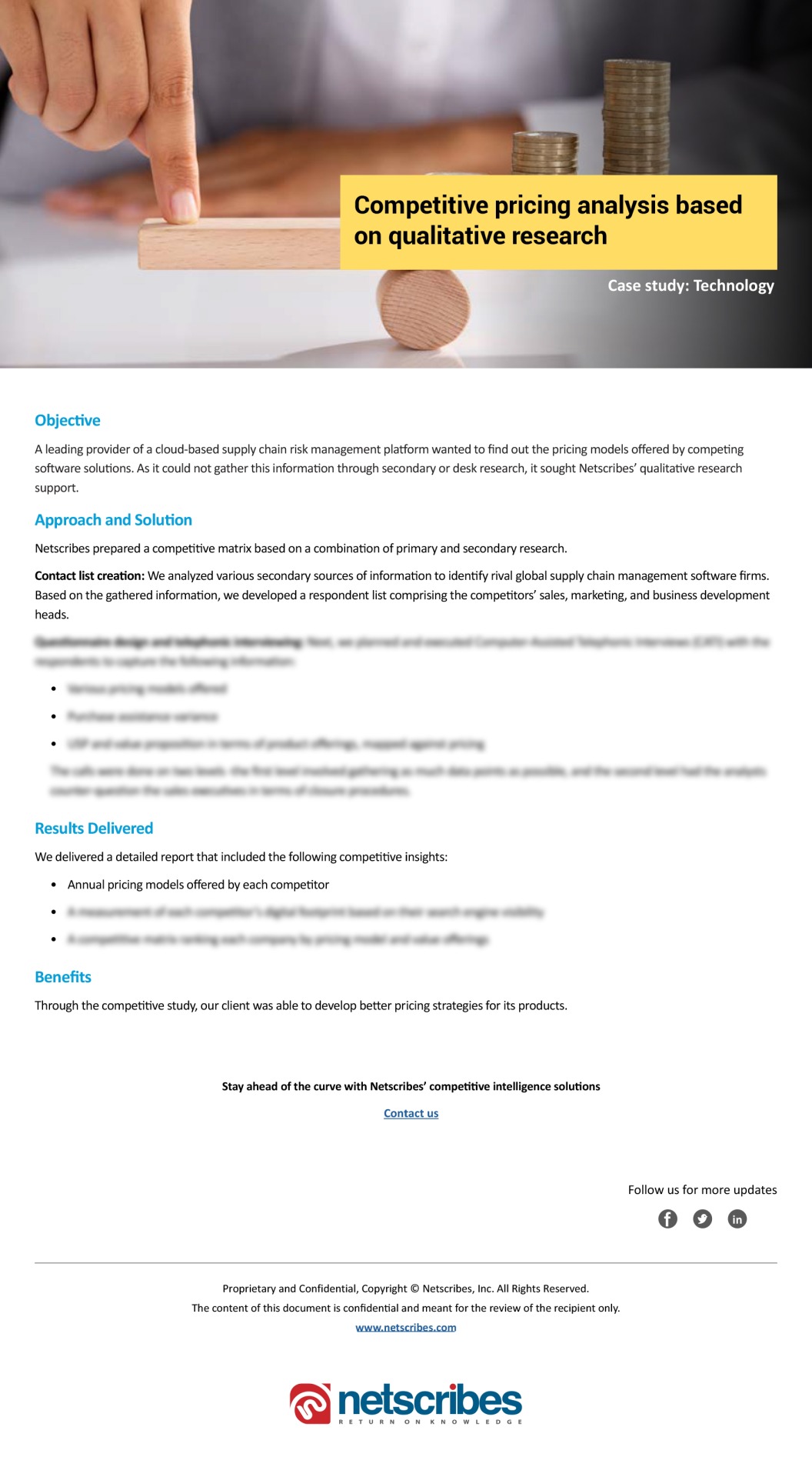
Discover how our cloud-based supply chain client partnered with Netscribes to optimize pricing and gain a competitive edge.
Read more: Competitive pricing analysis based on qualitative research
0 notes
Text
Pricing Best Practices in the Fashion Industry

Written By: Gargi Sarma
Introduction:
The fashion industry's retail pricing landscape is a complex and ever-changing environment that is influenced by a wide range of factors, including customer demand, market trends, brand positioning, and production costs. Pricing strategies are crucial in defining a brand's competitiveness, profitability, and overall market placement in the dynamic world of fashion. Fashion merchants must make wise decisions to strike a delicate balance between providing value to customers and upholding a sustainable business strategy. This investigation explores the nuances of retail pricing in the fashion sector, illuminating the important factors, difficulties, and tactics that companies use to deal with this complicated environment. Understanding the factors at work is crucial for both industry insiders and consumers looking to get insight into the dynamics that drive the cost of style, from the impact of rapid fashion to the growth of e-commerce.
With a predicted cumulative annual growth rate (CAGR) of 3.8%, the worldwide fashion retail market, estimated at USD 1.9 trillion in 2022, is expected to reach USD 2.2 trillion by 2025 (Statista).
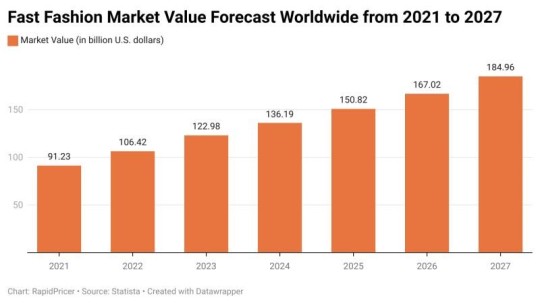
Figure 1: Fast Fashion Market Value Forecast Worldwide 2021 to 2027
In 2022, the global fast fashion market was projected to be valued at more than 106 billion dollars. It was predicted that this would increase significantly in the ensuing years. It was projected that the fast fashion industry would have a global market value of about 185 billion dollars by 2027.
Now let us explore the subtleties of fashion retail pricing and discover the strategies that fashion retailers can use to draw in customers, build brand loyalty, and stay afloat in the always-shifting global fashion industry.
Competitive Pricing in the Fashion Industry:
The fashion industry presents itself as a dazzling realm of short-lived fads and high-stakes trends, but retail pricing is really a battlefield of ruthlessness. Here, companies compete for consumers' attention and market share by using price tags as weapons in an unending battle for their part of their wallets. With a compound annual growth rate (CAGR) of 6.47%, the global fashion retailing market is projected to reach USD 122.6 billion by 2027 from USD 89.61 billion in 2022.
Merchants cannot reliably duplicate that performance over thousands of styles, not even when they precisely balance all the relevant criteria and evaluate them for a given style. For them to incorporate this level of rigor into their daily merchandising, they require at-scale analytical skills.
Successful clothing companies have figured out how to use a scalable, intelligent pricing discipline that responds to their customer's willingness to pay. These retailers are making more informed judgments by carefully considering their price and promotion expenditures and by utilizing insights from advanced analytics.
This does not imply that business owners should give up on setting prices. Fashion's seasonality and constantly shifting trends necessitate a pricing strategy that combines science and intuition, even if automated pricing solutions have been successful in several hardline categories (Figure 2).
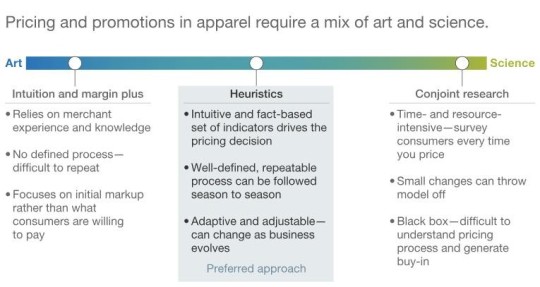
Figure 2: Pricing and promotions in Fashion Industry (Source: McKinsey & Company)
Intensity of Competition:
High Saturation: There are a plethora of players in the fashion business, ranging from agile online startups to international behemoths. Because there are so many options available, customers are picky and brands are striving to distinguish out.
Rules of Transparency: Comparing prices is now quite easy thanks to the internet. Brands are continually forced to modify and improve their pricing tactics as a result of consumers' ability to instantaneously pit them against one another.
Quick Fashion Madness: Traditional fashion is under pressure as fast fashion's lightning-fast pace produces stylish items at ridiculously low costs. Strategic discounting is essential to the fast fashion industry, which is defined by its quick trend cycles and reasonably priced clothing. However, the discounting game becomes more difficult when there are several retail locations. It can be very difficult to strike a balance between local competitiveness, consumer behavior, and profitability across many geographies
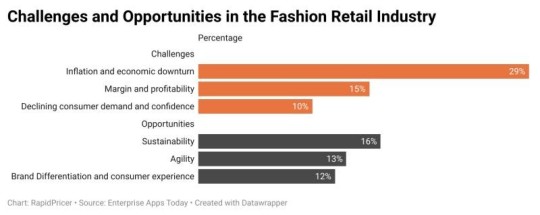
Figure 3: Challenges and Opportunities in the Fashion Retail Industry
Sustainability is regarded as the best opportunity for fashion retail firms, according to a 2022 study of fashion professionals globally (Enterprise Apps Today). Of those surveyed, about sixteen percent said that the biggest opportunity facing the fashion sector in 2023 is sustainability. In the same year, the industry was expected to face major challenges mostly from inflation and economic deterioration.
Data Highlights:
According to a McKinsey analysis from 2021, 70% of fashion executives consider pricing to be their most important strategic tool.
According to a 2022 Edited research, the average discount percentage in the US across all apparel categories was an astounding 54%. This demonstrates how common markdowns are and how constant demand to offer offers is.
The Environment of Competition:
Value vs. Premium: Brands with a tight budget, like as Zara and H&M, rely on providing fashionable looks at reasonable costs. In the meantime, high-end brands such as Chanel and Dior demand premium pricing due to their exclusivity and fine craftsmanship.
Niche vs. Mass: Independent, smaller firms frequently establish a niche by focusing on particular ideals or styles. They must, meanwhile, contend with bigger firms' extensive reach and powerful marketing campaigns.
Online vs. Offline: Traditional retail has been upended by e-commerce. There is more pricing competitiveness when brick-and-mortar stores are undercut by online sellers due to lower overhead costs.
New Approach in Fashion Retail Pricing:
A flurry of cutting-edge tactics that put data, personalization, and dynamic adjustments front and center are challenging the conventional, one-size-fits-all approach to clothing pricing. Let us examine some of the novel strategies that are transforming the fashion pricing landscape:
Data-Informed Pricing: The days of setting prices only by cost plus markups are long gone. These days, brands use enormous information to learn about market trends, rival tactics, and consumer preferences. Pricing choices are influenced by this data, which guarantees that goods are valued fairly and at a competitive price.The online personal styling service Stitch Fix recommends tailored outfits at the best prices by analyzing consumer data such as budget, fit preferences, and past purchases using algorithms.
Dynamic Pricing: Imagine having real-time price fluctuations based on supply and demand, weather, and even inventory levels! Dynamic pricing, which is frequently employed in the hotel and airline sectors, is starting to appear in fashion. Prices can change to maximize income and improve inventory management, depending on variables like popularity, the approach of the end of the season, or competitor discounts.Examples of luxury firms experimenting with dynamic pricing include Burberry and Off-White, which change prices on some items in response to online activity and purchase intent.
Value-Added Pricing: Value-based pricing goes beyond merely cost and markups to consider the perceived value that a product offers to the consumer. This takes into account elements such as brand reputation, ethical sourcing, sustainability, and quality. Brands that base their pricing on the total value offer are able to charge top dollar for goods that have a strong emotional connection with customers.To explain premium pricing for its materials that are obtained ethically and its responsible production procedures, Patagonia, which is well-known for its high-quality outdoor apparel and commitment to sustainability, bases its product prices on factors such as durability, performance, and environmental effects.
Subscriptions Models: Subscription businesses like Rent the Runway and Le Tote allow users to access a carefully curated closet for a monthly charge, in place of purchasing clothing outright. Customers may do this to keep current without going over budget, and brands.An example of a flexible and data-driven pricing strategy is Stitch Fix's "Fix Freestyle" subscription, which sends customers a monthly box of tailored clothing selections with the option to retain what they like and return the rest.
AI-Driven Customization: In the future, solely you will be charged for the clothes you wear! Soon, AI-powered customisation will be available; computers will examine your unique taste in fashion, past purchases, and even your social media activity to suggest and price articles of clothes that are precisely right for you.Although they are still in their infancy, several firms, such as The Dressiest, are utilizing AI to customize price and clothing recommendations according to each person's preferences, body type, and financial situation.
These are just a handful of the innovative methods that are transforming the cost of clothing. Brands can develop lucrative pricing models that appeal to today's tech-savvy and value-conscious consumers while also being equitable and fair by embracing data, personalization, and dynamic strategies. Recall that the future of fashion pricing does not lie in uniform markups but rather in developing a dynamic, data-driven ecosystem that customizes prices to meet the requirements and tastes of each individual customer, eventually benefiting both consumers and companies.
Analytical Solutions in Fashion Retail Pricing:
Effective pricing is a continuous challenge in the changing and complex world of fashion retail. Thankfully, analytical tools may provide much-needed data-driven insights, enabling you to enhance profitability and optimize pricing tactics. Here are some important examples and analytical solutions:
Demand Forecasting: To determine the demand for certain items and designs with accuracy, and examine past sales data, seasonal trends, rival pricing, and outside variables like the state of the economy and the weather. In order to prevent overstocking or understocking, this aids in initial pricing determination.Example: A retailer predicts that a stylish dress with a floral pattern will be in high demand in the spring using AI-powered demand forecasting. Because they expected to be popular, they set an initial price that was marginally higher. This increased sales during the peak of demand allowed them to make more money.
Price Elasticity: Understanding how demand shifts in response to price changes is important for measuring price sensitivity. This aids in optimizing promotional pricing, determining smart markdowns, and preventing losses from needless discounts.Example: A clothing company that studies price elasticity data finds that consumers are quite sensitive to pricing for entry-level t-shirts but not as much for designer pants. They maintain better margins on premium jeans while implementing targeted markdowns on t-shirts to clear inventory without substantially affecting sales.
Competitive Analysis: Benchmarking against rivals: Keep an eye on rivals' pricing policies for comparable products to spot chances for value proposition and differentiation. This guarantees competitive pricing that is consistent with your brand strategy and helps prevent price wars.Example: To determine the price range of comparable footwear sold by other high-end brands, a luxury sneaker company does a competitive analysis. They attract customers who are looking for a mix between cost and exclusivity since they put their prices slightly below average.
Dynamic Pricing: Use algorithms to automatically change prices in response to various parameters, such as the time of day, inventory levels, customer demographics, and online purchasing patterns. Securing the best prices for every product and consumer group optimizes income.Example: To encourage impulsive purchases and hasten inventory clearance, an online fashion shop utilizes dynamic pricing to provide discounts on slow-moving items during off-peak hours.
Markdown Optimization: Determine the best time and amount of markdowns for certain products by analyzing sales data and forecasting future performance. This efficiently removes slow-moving products and creates room for fresh arrivals while minimizing losses.Example: To determine which particular shirt isn't selling well, a department shop employs markdown optimization methods. During a weekend sale, they apply a targeted 20% discount, which boosts sales and lessens the need for inventory.
Keep in mind that analytical solutions are only as good as the supporting data. Make sure your pricing choices are founded on accurate and trustworthy information by allocating resources towards comprehensive data collecting and quality checks. Analytical solutions can be your secret weapon in understanding the always-changing world of fashion retail pricing if you have the correct tools and attitude.
Conclusion:
In conclusion, brands must traverse a complicated landscape of consumer expectations, market trends, and operational considerations in the fashion industry's sophisticated dance of retail pricing, which is a combination of art and strategy. The industry's ongoing evolution, together with changing consumer tastes and global dynamics, highlights how crucial it is to implement dynamic and data-driven pricing strategies.
The need for creative solutions grows as fashion retailers attempt to find the right mix between value proposition and profitability. Industry participants are urged to investigate cutting-edge techniques and technologies in order to obtain a competitive edge and successfully negotiate the complexities of fashion retail pricing.
Get in touch with RapidPricer right now to start your road toward price precision and maintain your competitive edge in the exciting and rapidly evolving world of fashion commerce. Your customized solution is here - use RapidPricer to reinvent your pricing strategy and maintain your leadership position in the fashion sector.
About RapidPricer
RapidPricer helps automate pricing, promotions, and assortment for retailers. The company has capabilities in retail pricing, artificial intelligence, and deep learning to compute merchandising actions for real-time execution in a retail environment.
Contact info:
Website: https://www.rapidpricer.com/
LinkedIn: https://www.linkedin.com/company/rapidpricer/
Email: [email protected]
#hashtag#fashionpricing hashtag#apparelstrategies hashtag#clothingtrends hashtag#retailoptimization hashtag#costeffectivestrategies hashtag#competitivepricing hashtag#luxuryfashion hashtag#sustainablepricing hashtag#ecommercemodels hashtag#discountstrategies hashtag#valuebasedpricing hashtag#pricinganalysis hashtag#consumerbehavior hashtag#seasonalpricing hashtag#dynamicpricing hashtag#pricingelasticity hashtag#transparencyinpricing
2 notes
·
View notes
Text

Selling a product or service in today’s digital era isn’t easy. Everyone who wishes to purchase something performs thorough research on the value and quality of the product. And that means it certainly becomes difficult for the sellers to determine appropriate product price that attracts the customers as well as generates profits.
Well, even though it can be difficult to work on an E-commerce pricing strategy, but it is never impossible. In fact, there are few ways to determine the reliable pricing strategy that suits your business effectively.
In this article, we will delve deeper into understanding the top pricing strategies.
https://wersel.io/ecommerce-pricing-strategy
#ecommercepricingstrategy#pricinganalysis#priceintelligence#pricingoptimization#pricingstrategies#pricemonitoring#priceoptimization#pricingsoftware
1 note
·
View note
Link
#granulardata#micromarkets#priceband#pricinganalysis#changingaspirations#pricingstrategy#skuportfolio#storeportfolio#storelocation#storeprofile
0 notes
Photo
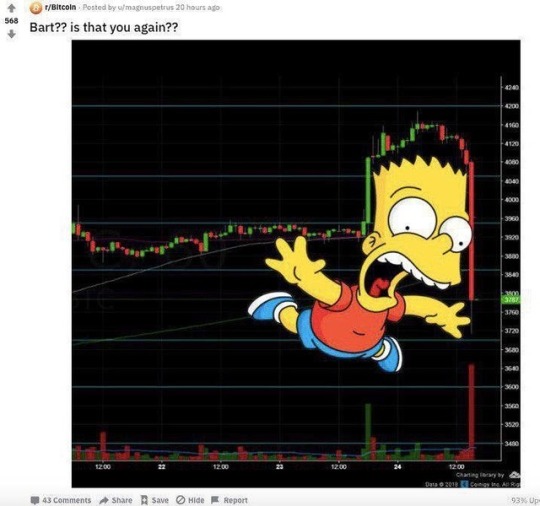
#Bitcoin #pricinganalysis: moderate recovery. (Simpson, Louisiana) https://www.instagram.com/p/BuY_6o5H2A_/?utm_source=ig_tumblr_share&igshid=r6ko726wq6em
0 notes
Photo

We implement various technologies that analyse pricing information and help farmers with better pricing options. Register on our platform - www.marketgalee.com
0 notes
Text
Why eCommerce Brands Need Digital Commerce Intelligence
“Let’s BlinkIt”, or “Look it up on Amazon” These phrases have become common in our everyday lives. This reflects how online shopping; and digital commerce intelligence are getting ingrained in our habits and their convenience has become an integral part of any shopper’s routine.
To match the changing and ever-evolving customer behavior and needs shopping platforms are also expanding their inventory across categories covering every aspect of shopper’s needs from food and beverages, groceries, fashion & accessories, and home decor to last-minute needs with quick commerce. enhancing UI/UX to connect with the audience, penetrating beyond tier-1, and tier-2 cities. The eCommerce is expanding, enhancing customer experience, and even coming up with new exclusive niche categories. These are exciting times for brands and shoppers. However, as the eCommerce game is moving into the next level brands also need digital commerce intelligence to stay ahead of the competition.
Intelligence across platforms and geographies helps effortlessly elevate business by strategically refining every touchpoint with data-driven decisions to optimize your customer journey across digital commerce marketplaces and product categories. Click here to read more about ecommerce
#ecommerce#quickcommerce#ecommercecompetitveanalysis#pricinganalysis#ecommercesolution#digitalshelf#digitalshelfanalytics#digitalcommerceintelligence#digitalcommerceanalytics#ecommerceintelligenceinusa
0 notes
Text
Putting E-commerce to Work for Power Users
E-commerce intelligence is helping online businesses by offering real-time customer behavior, competitor strategies, and market trends to the firms. Digital Shelf Analytics is an important means to optimize product listings which helps the product to stand out in the online competition, while Pricing Analysis helps the business to follow the competitors and market prices in real-time, thus enabling them to adjust prices to maximize profit.
Another important tool of e-commerce intelligence is Sentiment Analysis. It involves capturing customer feedback through reviews and social media. This helps a business to understand the consumer's feelings towards their products or services. And companies can use these insights to improve their offerings and improve the overall user experience.
#ecommerceintelligence#ecommerceintelligencesolution#digitalshelfanalytics#pricinganalysis#sentimentanalysis#sentimentanalysistool
0 notes
Text
Why do brands need a Pricing Tracker and Pricing Analysis across e-commerce platforms?
It makes monitoring competition prices and discounts across online marketplaces, and geographies extremely crucial. Let’s explore how an efficient pricing tracker and pricing analysis can help your brand propel on e-commerce and quick commerce platforms.
Challenges in Price monitoring on e-commerce and quick commerce platforms
Need time sensitive data and actionable insights on pricing and discount trends to stay ahead of competition.
The city-level monitoring across platforms weekly and hourly to capture fluctuations in prices and discounts.
Click here to learn more about the pricing analysis.
#pricinganalysis#quickcommerce#ecommerceintelligence#ecommercesolution#ecommercesoftware#ecommercecompetitiveanalysis
0 notes
Text
Why eCommerce Brands Need Digital Commerce Intelligence
For instance, with digital commerce intelligence — Availability analysis for a popular noodle brand, we discovered it has the lowest availability amongst the competitors, among quick commerce platforms on Blinkit it has the lowest availability of 25%. In Delhi, 61% of the listings are out of stock! Availability is almost 0% on the pin codes 110017, and 122001. Actionable insights such as these on various KPIs help brands identify gaps, track platforms, and geography with customized scheduled ed platform scans, monitoring on monthly, weekly, daily, and even hourly on certain KPIs such as stock availability, product page content, delivery turnaround time and keyword share, etc. can help a brand grow in fiercely competitive eCommerce and quick commerce landscape.
Optimize Customer Journey with Digital Commerce Intelligence
Every step on the e-commerce platform can be elevated to boost sales, get new shoppers, have more visibility on the digital shelf, and enhance customer experience. The biggest impact of eCommerce intelligence is that it helps optimize your customer journey to stay ahead of the competition.
Phase 1: Generate Interest and Awareness
In the first phase generating eCommerce competitive analysis helps generate awareness & Interest by optimizing discoverability, keyword share, and viewability of the own, competition, and other products in the market across multiple platforms. Lists out the keywords that the client should start bidding on and also the keywords where the client can stop their bidding by comparing the parameters like traffic, CTR, CPC, organic, and sponsored discoverability. Also covers discoverability and placement rank on category pages (commonly known as Browse Share).
Enhance PDP page content (images, text), as per ASCII guidelines, platform guidelines, and best practices. Review, edit, and rebuild the content to meet the specified benchmarks to improve your content.
Also, keep track of the Banner Visibility of own and competition brands. Analyses the eCommerce Ad banner position, content, and themes/ cohorts of advertising content such as offers, discounts, branding banners, etc.
Phase 2: Optimize Consideration & Evaluation Process
To ace the race, you need to be on the shelf! Availability and pricing are the keys to winning across the e-commerce marketplaces.
Key track of your stock availability across sb-brand, categories, sub-categories, and product variants against the competitors’ own products. Analyze the market via competitive pricing analysis, tracker, and monitoring of pricing trends. Be vigilant for MAP violations norms and discount threshold violations.
Keep track of delivery turnaround time on eCommerce platforms. Analyze the customer feedback, ratings, reviews, and Q&As on various parameters of the products of own and competition.
Read More…
#pricinganalysis#quickcommerce#digitalcommerceintelligence#pricing analysis#ecommerce competitive analysis
0 notes
Text

One of the classic competitive pricing examples is Pepsi and Coca Cola. These two brands compete against each other for various factors, right from pricing to quality and features. However, Coca Cola usually charges more on average than Pepsi.
Now you may think, “How can I lower the price and still gain the profits?” Well, this guide is here at your disposal. Here you will find the answer to most of your doubts and questions. Let’s start with - What is competitive pricing?
https://wersel.io/competitive-pricing-strategy
#competitivepricing#priceintelligence#ecommercepricing#pricingstrategy#pricingoptimization#pricinganalysis#pricingstrategies#pricemonitoring#pricingsoftware#priceoptimization
1 note
·
View note
Text
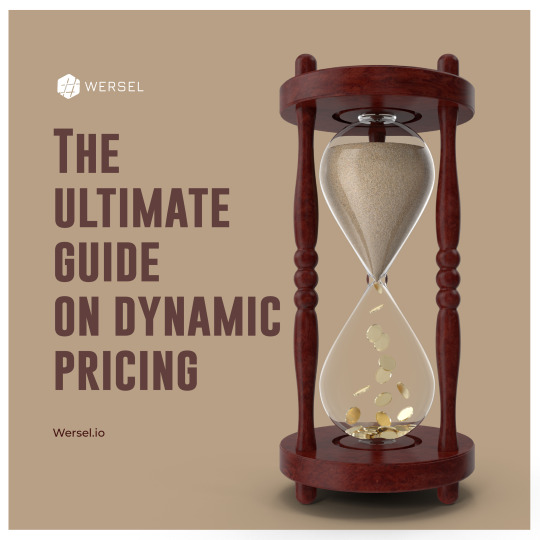
Dynamic pricing is one of the trends that has taken the e-commerce industry by storm. Find out why it's important for your business.
https://wersel.io/dynamic-pricing-in-ecommerce
#dynamicpricing#pricingstrategy#pricingoptimization#pricingstrategies#pricinganalysis#ecommercetips#priceintelligence#priceoptimization#pricemonitoring
1 note
·
View note
Link
#geolocations#fmcginsights#data virtualization#marketinginterventions#DiscoveryAnalytics#diagnosticanalytics#prescriptiveanalytics#predictiveanalytics#skupricing#granulardata#micromarkets#price band#pricinganalysis#changingaspirations#pricingstrategy#skuportfolio#storeportfolio#storelocation
0 notes